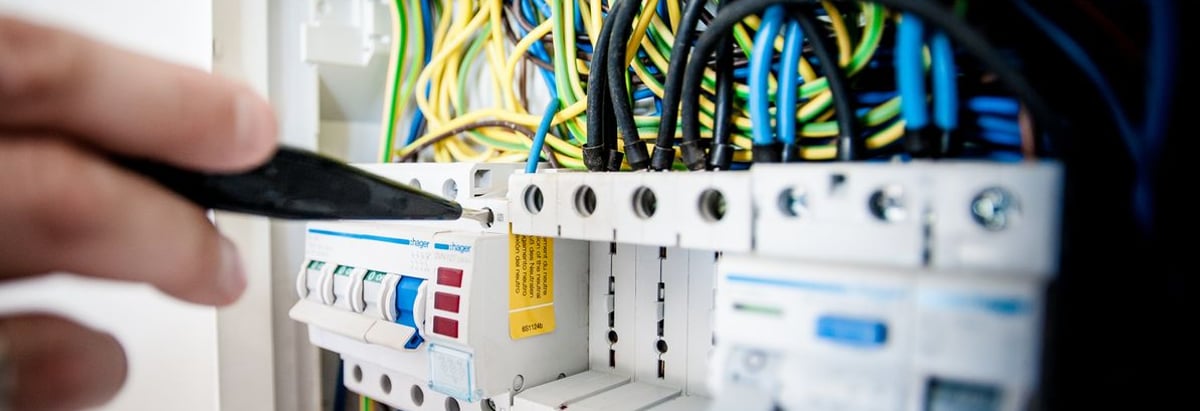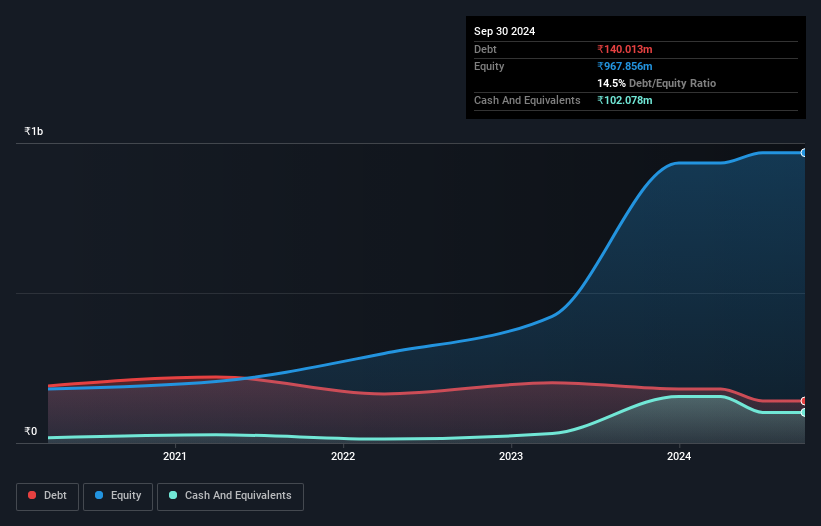- India
- /
- Electrical
- /
- NSEI:SAAKSHI
We Think Saakshi Medtech and Panels (NSE:SAAKSHI) Is Taking Some Risk With Its Debt

David Iben put it well when he said, 'Volatility is not a risk we care about. What we care about is avoiding the permanent loss of capital.' So it might be obvious that you need to consider debt, when you think about how risky any given stock is, because too much debt can sink a company. We note that Saakshi Medtech and Panels Limited (NSE:SAAKSHI) does have debt on its balance sheet. But is this debt a concern to shareholders?
Why Does Debt Bring Risk?
Debt and other liabilities become risky for a business when it cannot easily fulfill those obligations, either with free cash flow or by raising capital at an attractive price. Ultimately, if the company can't fulfill its legal obligations to repay debt, shareholders could walk away with nothing. However, a more usual (but still expensive) situation is where a company must dilute shareholders at a cheap share price simply to get debt under control. Of course, debt can be an important tool in businesses, particularly capital heavy businesses. When we examine debt levels, we first consider both cash and debt levels, together.
What Is Saakshi Medtech and Panels's Net Debt?
As you can see below, Saakshi Medtech and Panels had ₹140.0m of debt at September 2024, down from ₹180.1m a year prior. However, it does have ₹102.1m in cash offsetting this, leading to net debt of about ₹37.9m.

How Strong Is Saakshi Medtech and Panels' Balance Sheet?
According to the last reported balance sheet, Saakshi Medtech and Panels had liabilities of ₹178.8m due within 12 months, and liabilities of ₹127.9m due beyond 12 months. Offsetting this, it had ₹102.1m in cash and ₹226.9m in receivables that were due within 12 months. So it actually has ₹22.4m more liquid assets than total liabilities.
Having regard to Saakshi Medtech and Panels' size, it seems that its liquid assets are well balanced with its total liabilities. So while it's hard to imagine that the ₹2.27b company is struggling for cash, we still think it's worth monitoring its balance sheet.
Check out our latest analysis for Saakshi Medtech and Panels
We use two main ratios to inform us about debt levels relative to earnings. The first is net debt divided by earnings before interest, tax, depreciation, and amortization (EBITDA), while the second is how many times its earnings before interest and tax (EBIT) covers its interest expense (or its interest cover, for short). Thus we consider debt relative to earnings both with and without depreciation and amortization expenses.
Saakshi Medtech and Panels has a low net debt to EBITDA ratio of only 0.23. And its EBIT covers its interest expense a whopping 36.6 times over. So you could argue it is no more threatened by its debt than an elephant is by a mouse. It is just as well that Saakshi Medtech and Panels's load is not too heavy, because its EBIT was down 30% over the last year. When a company sees its earnings tank, it can sometimes find its relationships with its lenders turn sour. The balance sheet is clearly the area to focus on when you are analysing debt. But it is Saakshi Medtech and Panels's earnings that will influence how the balance sheet holds up in the future. So if you're keen to discover more about its earnings, it might be worth checking out this graph of its long term earnings trend.
Finally, a business needs free cash flow to pay off debt; accounting profits just don't cut it. So we always check how much of that EBIT is translated into free cash flow. Over the last three years, Saakshi Medtech and Panels saw substantial negative free cash flow, in total. While investors are no doubt expecting a reversal of that situation in due course, it clearly does mean its use of debt is more risky.
Our View
While Saakshi Medtech and Panels's EBIT growth rate has us nervous. For example, its interest cover and net debt to EBITDA give us some confidence in its ability to manage its debt. Looking at all the angles mentioned above, it does seem to us that Saakshi Medtech and Panels is a somewhat risky investment as a result of its debt. That's not necessarily a bad thing, since leverage can boost returns on equity, but it is something to be aware of. When analysing debt levels, the balance sheet is the obvious place to start. However, not all investment risk resides within the balance sheet - far from it. For instance, we've identified 2 warning signs for Saakshi Medtech and Panels (1 shouldn't be ignored) you should be aware of.
Of course, if you're the type of investor who prefers buying stocks without the burden of debt, then don't hesitate to discover our exclusive list of net cash growth stocks, today.
If you're looking to trade Saakshi Medtech and Panels, open an account with the lowest-cost platform trusted by professionals, Interactive Brokers.
With clients in over 200 countries and territories, and access to 160 markets, IBKR lets you trade stocks, options, futures, forex, bonds and funds from a single integrated account.
Enjoy no hidden fees, no account minimums, and FX conversion rates as low as 0.03%, far better than what most brokers offer.
Sponsored ContentNew: Manage All Your Stock Portfolios in One Place
We've created the ultimate portfolio companion for stock investors, and it's free.
• Connect an unlimited number of Portfolios and see your total in one currency
• Be alerted to new Warning Signs or Risks via email or mobile
• Track the Fair Value of your stocks
Have feedback on this article? Concerned about the content? Get in touch with us directly. Alternatively, email editorial-team (at) simplywallst.com.
This article by Simply Wall St is general in nature. We provide commentary based on historical data and analyst forecasts only using an unbiased methodology and our articles are not intended to be financial advice. It does not constitute a recommendation to buy or sell any stock, and does not take account of your objectives, or your financial situation. We aim to bring you long-term focused analysis driven by fundamental data. Note that our analysis may not factor in the latest price-sensitive company announcements or qualitative material. Simply Wall St has no position in any stocks mentioned.
About NSEI:SAAKSHI
Saakshi Medtech and Panels
Engages in the manufacture and sale of electrical control panels and cabinets in India.
Excellent balance sheet and slightly overvalued.
Similar Companies
Market Insights
Community Narratives



